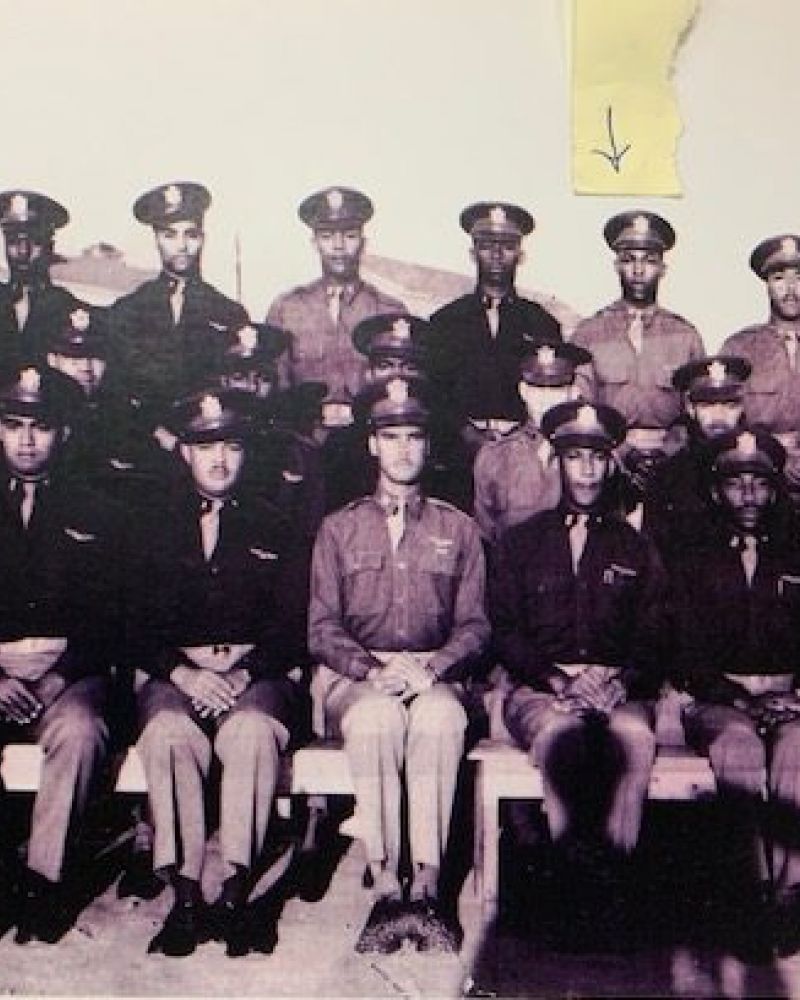Tuskegee Airmen

Who Were They?
Like World War II, the U.S. was not fully vested until December 7, 1941, the bombing of Pearl Harbor. Just before Pearl Harbor, the U.S. War Department established the 99th Pursuit Squadron. This squadron became the Tuskegee Airmen of the U.S. Army Air Corps, known today as the U.S. Airforce. What was unique about this squadron is that these were the first Black military pilots in the history of the United States. The Tuskegee Airmen and their support personnel trained at airfields near and around Tuskegee, AL, and as far north as Lockbourne, Ohio, to name a few. Young men enlisted from New York City, Chicago, Detroit, and Los Angeles for the opportunity to become skilled, courageous, patriotic, and respected airmen of the United States military.
If one had the mental stamina, they all faced unbelievable racism and met the physical qualifications, and then they were accepted into the program. The young cadets began training in July 1941 and completed their training by March 1942, when World War II was in full swing. Not to get this confused with the understanding that there were Black pilots, but there were none in the military. Before the Tuskegee Airmen, the only Black pilot that you may have heard of was Eugene Bullard. Bullard flew a military aircraft for the French Air Service in World War I.
Achievements
Some Tuskegee Airmen became pilots while others became engine mechanics, control operators, parachute preparers, M.P. (Military Police), administrative clerks, and the majority of the men were college graduates. The young men who became pilots of either a single-engine or multi-engine plane were all trained at the TAAF – the Tuskegee Army Air Field in Tuskegee, Alabama. These brave men fought in World War II and served in more than 15,000 special missions in Africa and Europe. The men became so skilled that they established the 447th Bombardment group of the United States Air Force. A statistic of their impact that is documented is that they destroyed 251 enemy planes!
With their often unappreciated work, they still were awarded over 700 citations and awards including 8 Purple Hearts, 14 Bronze Stars, and 150 Distinguished Flying Crosses. The Tuskegee Airmen ceased operations in 1946 with pride and dedication to a not always appreciative country. Thank you to all of the men who served as Tuskegee Airmen. A special thank you to Richard Davis and the Richard Davis Family of Tucson for your family’s Service.

Website by AAMSAZ
Logo Design by Felicia Penza -feliciapenza@gmail.com
Please note: No photos and no videos.

Site
Museum Location
-
Museum is located on the Campus of the University of Arizona
Student Union Room 244(1303 E University Blvd, Tucson, AZ 85719)
Park in the 2nd Street Garage
-
Museum is located on the Campus
of the University of Arizona
Student Union Room 244(1303 E University Blvd room 244, Tucson, AZ 85719)
Park in the 2nd Street Garage
Business Office
-
(Mail Address) 4511 N Campbell Ave
#255-2, Tucson, AZ 85718
Copyright © , African American Museum of Southern Arizona. All Rights Reserved. No image, sound or text from this site can be used without the expressed written permission of the museum’s Advisory Board.
